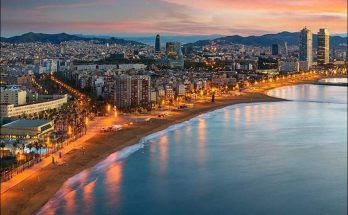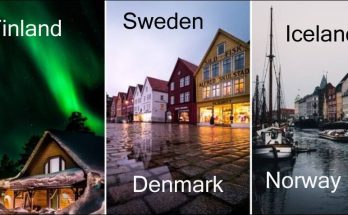Passing over the uncertain mysteries of the Stone Age and the Age of Bronze, it is no exaggeration to assert that already in the Greek civilization of Southern Italy one can divine the origin of some of the essential characteristics of the Italian of today.
Three or four centuries before Christ the way of life and of thought of the Siciliots and the Italic peoples, descendants of those Greeks who long before them had passed into Sicily and into the south of the peninsula, was entirely analogous to that of Hellas itself. The Polis, the city state, constituted the sole base of every political and social organism. One might say the same of Etruria, where between the Arno and the Tiber there was, until the Roman conquests, just a federation of twelve cities, a federation with extremely strict religious ties, but with a wide autonomy for each city.
When the dominion of Rome was extended over all Italy, things changed but little morally and socially; the civitas continued to be the base and the key to the life of all Italians. There is no other nation whose traditions, legends and popular epic are compelled so constantly to look to the city for their origin. Even in the Middle Ages while in France they sang the deeds of Roland, Italian poetry sang that Rome came from Alba Longa, Alba Longa from Lavinium and Lavinium from Troy through Aeneas. The perennial popular glory of Virgil among the Italians has depended upon this fact, that he sang the origins of their country in the one and only manner that they delighted in, that is, as the genealogy of the city state.
Even today the names of the Italian regions that we think so real, Piedmont, Lombardy, Liguria. . . do not belong to the natural use of the people. The native of a town, for instance, of that Ligurian bow that is bent from the French frontier along the sea to Genoa, and from Genoa to the south as far as the Magra, will never call his region Liguria, he will call it rather Genoa or perhaps Genovesato. It was always thus, contrary to what obtained in Gaul, where most often the name of the city is lost and that of the region has taken its place. Lutetia, the capital of the Parisii, became Paris, Avaricum of the Biturgi, Bourges, and so it is with Amiens, Reims, Rennes, and many other cities of France.
This voluntary binding of the peasant to the city, that exists almost everywhere in Italy, is one of the permanent strands of the Italian social fabric. In no other country is patriotism in its normal, healthy and fruitful form — not in the baseness of racialism and nationalism — so fundamentally bound to the city, to the town, as in Italy. Francesco De Sanctis in a speech to the Neapolitans in 1874 declared: “Italy is not an abstraction. She is the home (casa), the family, the commune, the province, the region. They who feel themselves bound to these, are the best Italians. . . I say to you: If you want to be good Italians begin by being good Neapolitans. Woe to those who only see an Italy of the Academies or Schools.”
Thus, fifty years before the Fascist adventure, De Sanctis condemned one of the most widespread, trumped-up and artful of Fascist devices: the attack on the ancient tradition of local patriotism. That attack ought to have been enough to expose how contrary all Fascist action was to the Italian character.
The secular bonds which bind our Italian generations were created by the city and the town. The history of the Italian cities is so long and tenacious that it often leads us back not only to Rome but to pre-Roman Italy. The small jealousies still alive today between Milan and Pavia, between Crema and Cremona, and the differences in the dialects, go back to traditions beyond the Roman Empire.
When Rome succeeded in imposing her dominion upon all Italy, almost every municipiam from the Alps to Sicily had to cede a part of its territory to a Latin colony which created around itself a circle of influences, imposing its own customs, its own manners, its own language, in such a way that the majority of the natives learned to speak in Latin, although they preserved their native accent. And even today, if you go from Rome to Florence, to Piacenza and on to Milan, you will find, in dialects very different, the notes never obliterated of ancient Gentes differing one from another.
This is not so north of the Alps in the Germanic countries. The frequent immigration of tribes without cities, the absence of precise frontiers between the regions they occupied, did not allow the formation of countrysides with characteristics of their own.
Under Republican Rome, Italy in reality was only an immense federation of cities, each free to administer itself in its own way within its own territory; something which reminds us of the British Empire in its most recent form, when the democratic term Commonwealth has been substituted for the haughty term Empire. The beginning of the decadence of the cities appeared in the Roman Empire in the time of Hadrian. Until then the municipia and coloniae had been governed by that wealthy and active citizen class out of which came the Fabii.
The decemviri elected from among the notables (people with very large incomes) carried out the administration from the Tribunal — the high court of Justice. But with Hadrian the officers of the Imperial administration progressively made themselves masters of all local affairs; and under Diocletian the Totalitarian State (as one might say today) was completely established.
The ancient courts, freely elected by the citizens, became corporations bound by numerous restrictions; they quickly lost all vitality; even the defensor civitatis became no more than a functionary to whom men looked — though it was but a pretence — for a denunciation of the errors of his superiors. And soon, whether by encroachment of the military or by reason of the distrust of the citizens, there remained only prefectures entrusted to comites sent from the Capital.
Under the Emperors of the East these comites, become even more corrupt, were called duces, whence came the title Doge which was for centuries the name of the head of the aristocratic Republics of Venice and Genoa. Thus, already under Diocletian, the Barbarians had invaded Italy; a work of the military anarchy of the third century rather than of certain starving tribes descending from Germany; out of which German vanity, and the desire of the Italians to attribute their ills to a foreign cause, have later made “the invaders” and their uncontrollable onrush.
The old and empty German boast became an official dogma under Nazism, which imposed on the schools of the Reich that to the new generation they should insist on the “fundamental part which the German emigrations had in diffusing the new civilization of the Middle Age, in northern Italy, in France and in England”.One might well ask what the few young Germans who seriously studied history thought, if they thought at all, when they discovered:
1. That the Goths did not know how to make their dominion in Italy last more than sixty years.
2. That in Spain they were defeated by those Semites who were the Arabs, and lost everything in a single day.
3. That the Lombards, although invited into Italy by a part of the population, never succeeded in occupying the coasts, never dared to measure themselves with the young and growing defences of Venice, nor with the ancient walls of Rome, and that their dominion ended in confusion and contempt.
Without the decomposition provoked by the Empire when fallen on the one hand into a military anarchy and on the other into a bureaucratic despotism, the German tribes would never have succeeded in establishing themselves here at all. The Italian cities would have opposed a sufficient resistance if the Empire had not broken their vitality.
Under Constantine, on the eve of the catastrophe, one might believe for a moment that the overflowing barbarism could have been dammed. The cities appeared about to renew themselves with fresh life, since they had acquired under other forms a certain autonomy chiefly through the action of the Bishops, elected, as they were, by the citizens; indeed, the nomination of a Bishop by acclamation was generally the result of an authentic popular movement. But it was too late. With their suffocating taxation and with foreign military chiefs, the Emperors had taken away every possibility of hope from the Italian cities.
They had become indeed Dead Cities, as the great capitals of the East appeared to our fathers of the nineteenth century, those for example of Turkey and of Persia; Istanbul and Teheran were once metropolises not less rich and not less fair than Milan and Naples in the Middle Age. There was a Turkish art and even more surely a Persian art. But the cities were without municipal liberty, without autonomous life and therefore servile. If Byzantium before becoming Istanbul succeeded in conserving a little of its life, it was because under its Basileus the municipal tradition was not utterly destroyed, as was that of the Italian cities by the Caesars.
The demi — comparable to the “contrade” of Siena — remained in Byzantium the focal points of municipal life as corporations, such as they are described to us in the Libro del Prefetto of the tenth century, with their relative freedom. The demi and the autonomous corporations offer us the keys of the real life of Byzantium, of its unexpected resistance and of its revolutions. But Byzantium remains an unique case, in the East; all the other metropolises, notwithstanding their occasional splendours, have been, if not inert masses, over disciplined, without an atom of the vitality that animated the anarchic Athens of Aristophanes even in its worst moments.
Visits: 78



